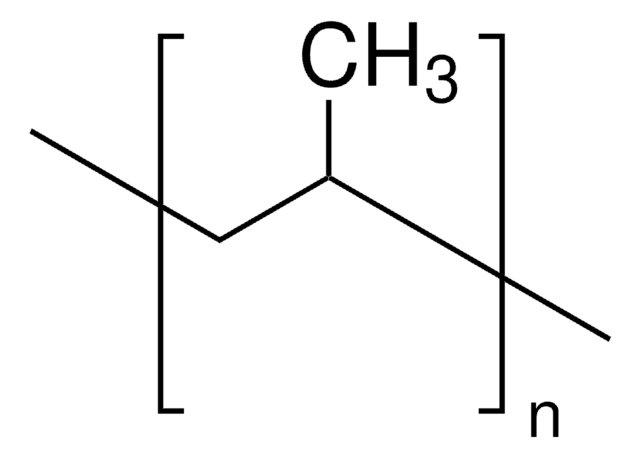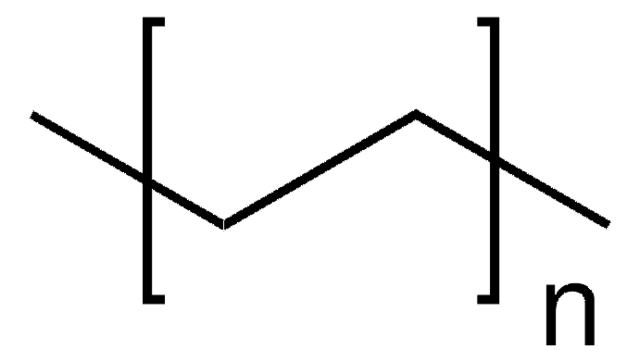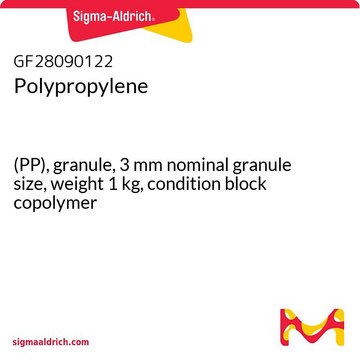ERMEC591
Polypropylene (PP)
ERM®, certified reference material
Sinonimo/i:
Polypropylene
About This Item
Prodotti consigliati
Grado
certified reference material
agenzia
ERM®
Produttore/marchio commerciale
JRC
Densità
0.9 g/mL at 25 °C (lit.)
applicazioni
chemicals and industrial polymers
Formato
neat
Temperatura di conservazione
−20°C
Stringa SMILE
CC=C
InChI
1S/C22H42O3/c1-2-3-4-5-11-14-17-20-21(25-20)18-15-12-9-7-6-8-10-13-16-19-22(23)24/h20-21H,2-19H2,1H3,(H,23,24)/t20-,21+/m1/s1
NSYDMBURIUSUDH-RTWAWAEBSA-N
Cerchi prodotti simili? Visita Guida al confronto tra prodotti
Risultati analitici
ERMEC591
Note legali
Codice della classe di stoccaggio
11 - Combustible Solids
Classe di pericolosità dell'acqua (WGK)
WGK 3
Punto d’infiammabilità (°F)
Not applicable
Punto d’infiammabilità (°C)
Not applicable
Scegli una delle versioni più recenti:
Certificati d'analisi (COA)
Ci dispiace, ma al momento non ci sono COA disponibili online per questo prodotto.
Se ti serve aiuto, non esitare a contattarci Servizio Clienti
Possiedi già questo prodotto?
I documenti relativi ai prodotti acquistati recentemente sono disponibili nell’Archivio dei documenti.
I clienti hanno visto anche
Il team dei nostri ricercatori vanta grande esperienza in tutte le aree della ricerca quali Life Science, scienza dei materiali, sintesi chimica, cromatografia, discipline analitiche, ecc..
Contatta l'Assistenza Tecnica.



